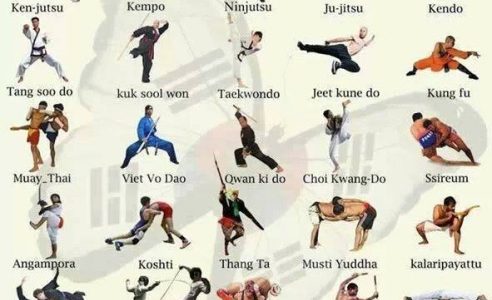The Value Of Adaptability In Martial Arts Educating
The Value Of Adaptability In Martial Arts Educating
Blog Article
Staff Author-Lamont Randrup
Did you know that adaptability plays an important role in fighting styles training?
In fact, a study carried out by the International Journal of Sports Physical Therapy disclosed that over 80% of martial musicians battle with restricted flexibility.
But why is adaptability so important? Well, it not just enhances your efficiency and strategy but also decreases the danger of injuries.
So, if you're aiming to take your fighting styles skills to the following degree and stay injury-free, you'll absolutely wish to keep reading.
Benefits of Adaptability in Martial Arts
Flexibility in fighting styles brings various benefits to practitioners, enabling you to improve your performance and reduce the risk of injury. By improving your versatility, you boost your variety of motion, enabling you to implement techniques with higher accuracy and efficiency.
This boosted dexterity and fluidity in your motions can provide you an one-upmanship, allowing you to react quicker and adapt to various circumstances throughout sparring or competitors. Furthermore, enhanced adaptability helps to stop injuries by improving muscle mass flexibility and joint movement.
It allows your body to move more easily, minimizing the stress on your muscular tissues and tendons. types martial arts , consequently, decreases the opportunities of sprains, strains, and muscle pulls. By integrating best martial arts to learn at home into your martial arts method, you not just enhance your efficiency however also guard your physical health.
Techniques to Improve Adaptability
To boost your flexibility in fighting styles, you can include numerous extending exercises right into your training regimen.
One efficient strategy is vibrant extending, which involves relocating via a full series of movement to heat up your muscles and raise flexibility. Examples include leg swings, arm circles, and trunk rotations.
One more technique is static stretching, where you hold a go for a continual time period. This aids extend and relax your muscle mass, enhancing flexibility in time. Typical fixed stretches for martial arts include the butterfly stretch, hamstring stretch, and shoulder stretch.
Furthermore, incorporating yoga or Pilates right into your training can also substantially enhance your versatility.
Keep in mind to always warm up prior to stretching and pay attention to your body to prevent injury.
Flexibility Training for All Skill Degrees
As you progress in your martial arts training, improving your flexibility comes to be vital for improving your general efficiency. Flexibility training isn't just advantageous for advanced practitioners but likewise for novices and intermediate trainees.
No matter your skill degree, incorporating adaptability exercises right into your training regimen will aid you create a variety of movement, prevent injuries, and boost your strategy implementation.
For novices, flexibility training can aid improve your kind and position, permitting you to do motions properly and effectively. Intermediate specialists can use flexibility training to further boost their variety of motion and enhance their fluidness in performing facility techniques. Advanced trainees can take advantage of flexibility training by keeping and improving their existing flexibility, enabling them to carry out advanced steps effortlessly.
Final thought
In conclusion, embracing adaptability in your martial arts training is extremely important. By integrating techniques to enhance adaptability, you can enhance your performance and prevent injuries.
Bear in mind, 'A flexible body is a resistant body.' So, maintain pressing your restrictions, extending on a regular basis, and profit of a supple and nimble figure.
